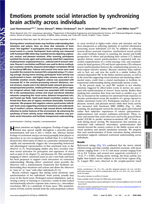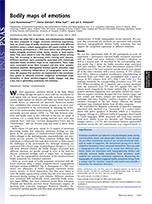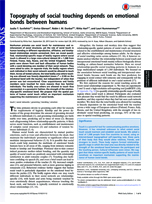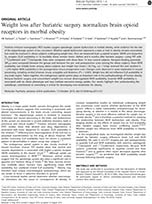Most of our current research is focused on the neurocognitive mechanisms of emotion systems, social bonding and social cognition. In addition to multimodal neuroimaging with functional and structural MRI, PET, EEG and MEG, we use numerous behavioural recording technigues such as eye tracking. At the moment, we are pursuing the following lines of research:
Neural circuitry of emotions
| Emotions guide organisms in constantly changing dynamic environments. In addition to providing rapid fight-or-flight responses during survival-salient encounters, emotions are also social signals that are expressed to other individuals, which provides important information for adjusting social interaction with that indivdual. In this line of research we use functional neuroimaging and state-of-the art behavioural and psychophsyiological responses for revealing the neural circuits that support perception of emotional signals including facial expressions, body postures and vocalizations, generating subjective emotional feelings (i.e. conscious representations of emotional states) as well as emotional contagion and empathy, that is, the tendency to automatically simulate emotional states observed in others.Additionally, we are investigating the link between emotion and somatosensation to reveal how emotions are represented not only in the mind, but also in the body. This research has revealed how different emotions are represented as topographically discrete maps of bodily sensations, and currently we are investigating how these bodily sensations develop throughout the lifespan and in different psychiatric disorders.Finally, we use positron emission tomography (PET) for quantifying the role of the endogenous dopaminergic, opioidergic and serotonergic systems in social and emotional behaviour including social bonding and attachment, eating and excercising. This allows us to reveal novel pharmacological targets for disorders involving deficits in social and motivated behaviour. |


|
Brain basis of social bonding and social cognition
| Humans have long-lasting affiliative relationships in all areas of life. These bonds persist despite of infrequent physical contact. Thus, they must be supported by a system that is decoupled from sexual response and direct physical contact. Using PET, fMRI and behavioural recordings we study the contribution of the mu-opioid receptor (MOR) system to social bonding and affiliation. We are focusing on the neural and behavioural basis of different bonding behaviours (particularly laughter and touch), as well as individual differences in the neuroreceptor systems that promote different types of bonding behaviour across individuals. Additionally, we investigate the mechanism that enable coordinated activity across groups of individuals. Understanding other peoples’ minds is one of the most fundamental human skills but also one of the most demanding challenges our brains must pose every day: To understand each others’ actions and intentions, we need to share internal neural representations of the external world across brains. Studying how similarly social information is represented across individual brains and how it flows from brain to brain during dynamic social encounters poses huge technical and conceptual challenges for the neuroscientists, who have consequently resorted to experiments using simplistic and impoverished social stimuli. This is obviously a far cry from the complex, interactive and social world our brains must parse every day. However, recent advances in the brain signal analysis enable us to study the foundations of brain basis of human social interaction under highly naturalistic settings with unparalleled accuracy and ecological validity. In this neuroimaging project we aim at bridging the gap between classic social psychology and cognitive neuroscience by building a comprehensive neurocognitive model of how individuals maintain and communicate shared neural representations of the dynamic social world. |
  |
Neuromolecular basis of obesity and overeating
| Diet and nutrition are critical factors in the maintenance of good health throughout the entire life course. Their role as determinants of chronic diseases such as obesity, diabetes and cardiovascular diseases is well established. However, the annual increase in the prevalence and the severity of obesity in both adults and children is currently substantial. Phenomenological similarities between obesity and addictive behaviors have led researchers to suggest that addictions may provide a framework for obesity. The most clearly established commonality of the mechanisms of drug and food intake is their ability to activate the dopamine containing link in the brain’s reward systems. Although exaggerated sensitivity to high-calorie food cues may be a critical factor explaining obesity, the exact neural basis of the individual differences in food-induced reward and subsequent eating habits are not fully understood. Our multimodal PET – fMRI studies in healthy and obese participants are aimed at determining how the tonic and phasic activity of the reward system predict self-reported eating habits and body mass. The functional data are complemented by structural MRI data, tractographic analyses of diffusion weighted data, and neurotransmitter (D2R and endogenous mu-opioid) PET studies. |
 |




